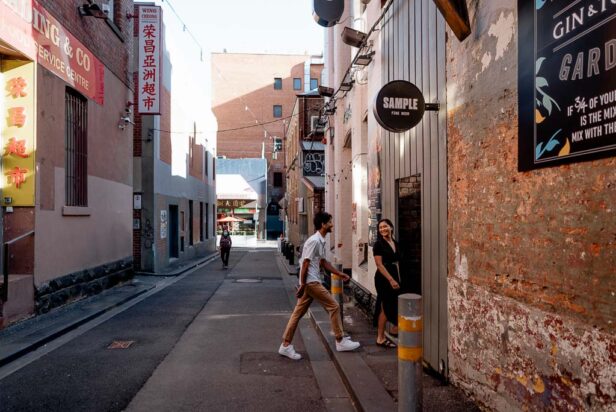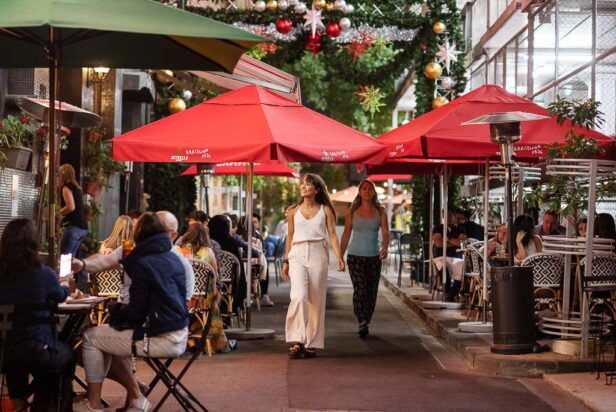Hosier Lane
Flinders St, Melbourne

When people think of Melbourne, many think of the incredible laneways; these winding burrows channel the life of the city. These thin alleys are filled with cafes, street-art, bars and buskers; they are brimming with charm and an essential visit for any tourist.
Originally dingy service lanes (built to service local businesses and residents) Melbourne’s laneways were first revitalised in the 1980’s by the city council. This ushered in many small businesses and the beginning of a Melbourne icon.
Melbourne’s most popular and commercial laneway is Hosier Lane, just down from Flinder’s Street Station. This laneway is bursting with street art from local artists, including a giant mural of a young Indigenous boy.
Join a laneway walking tour and let an expert guide you to the best laneways. This is an excellent way to ensure you don’t miss any.
Block Arcade
282 Collins St, Melbourne
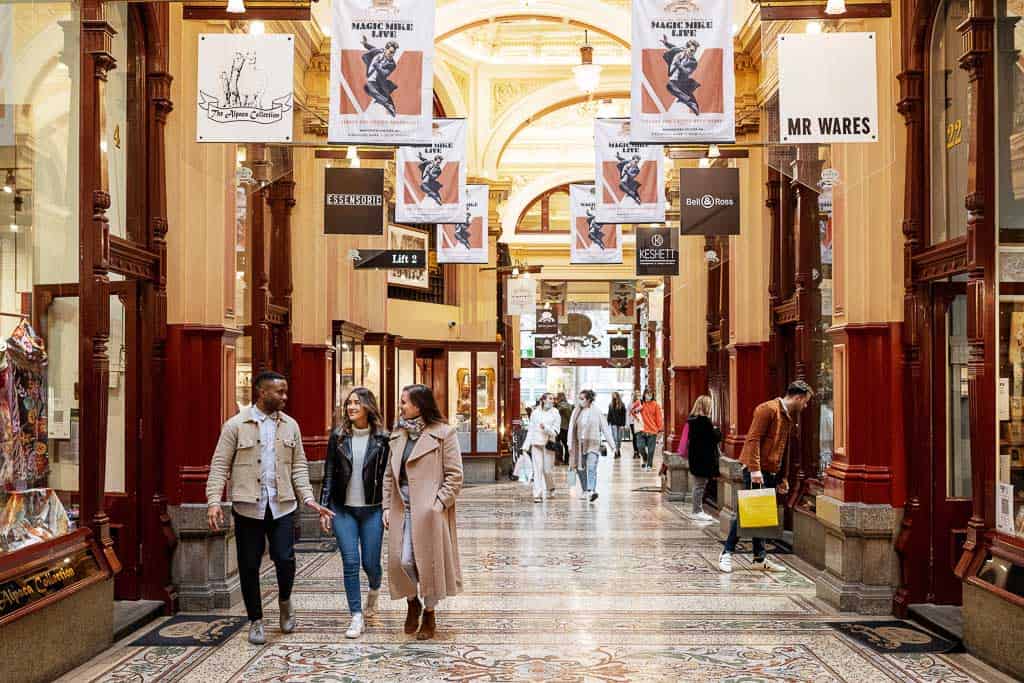
Standing in stark contrast to the city’s laneways are the glamourous arcades. They substitute street art and cobblestones with boutique shops and tiled floors.
The city features several glamourous arcades, including The Royal Arcade, the oldest arcade in Australia. While it’s very easy to visit them all (and we suggest you do) our pick of the bunch is The Block Arcade.
Modelled after the Galleria Vittorio Emanuele in Milan – it’s a pretty blatant copy – The Block Arcade features a giant domed roof, mosaic floor, and carved stone finishings.
Why is it called ‘The Block Arcade’? From the 1860s to the 1930s, men and women would walk around this city block, dressed in their finest clothes in an attempt to be admired by others.
This past time of high society was referred to as ‘doing the block.’
Flinders St Station
Flinders St, Melbourne
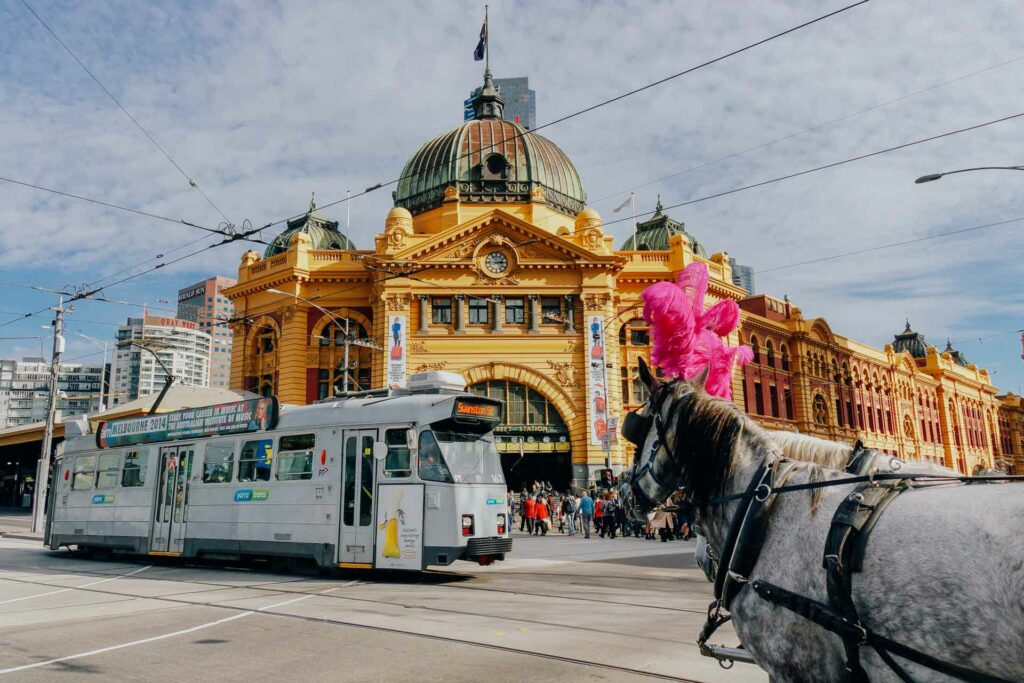
While Sydney has the Opera House (pfft), Melbourne has Flinders Street Station. Operating as the hub of the metropolitan train network, this city icon welcomes thousands of workers into the city every day.
The station is also Melbourne’s most popular meeting place. Phrases like “I’ll meet you under the clocks” refers to the clocks that indicate train departures – important knowledge if you want to blend in with the locals.
While you can venture into Flinders Street Station, there isn’t much to do unless you’re catching a train.
Instead, stand on the diagonally opposite corner for the perfect Instagram photo opportunity.
Chinatown
Little Bourke St, Melbourne
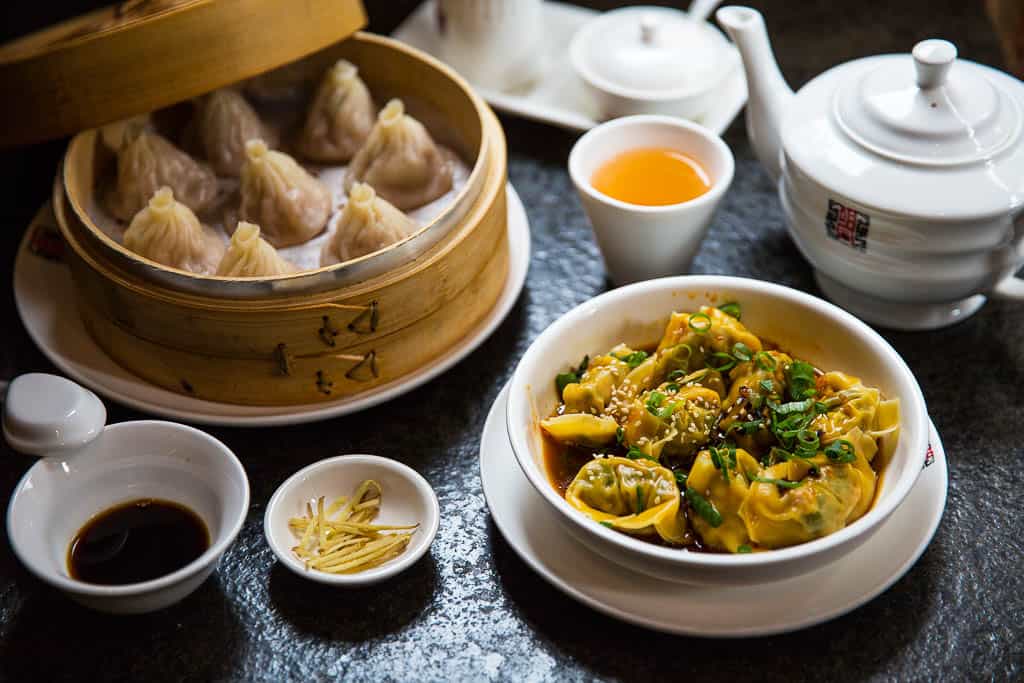
During the Victorian Gold Rush (1851) thousands of Chinese workers immigrated to Melbourne in order to mine the goldfields.
With the offer of riches, the Chinese commonly referred to Victoria as ‘New Gold Mountain.’
The Chinese settlers established a community in the city centre, and this has evolved into Melbourne’s Chinatown – the world’s oldest Chinese settlement in the Western world.
Taking up two blocks, the opium dens and brothels have been replaced with dumpling houses and bars. Hutong & Shandong Mama are widely regarded for their handmade parcels of deliciousness.
To learn more about how Chinese immigrants have influenced Melbourne, a visit to The Chinese Museum is also worthwhile.
City Circle Tram
Melbourne

Jumping on a tram is an instinctive behaviour of the Melbournian. As a tourist, you’ll need to join the locals, and the best way to practice is by catching the No 35.
This is the City Circle Tram, an iconic heritage W-Class tram (one of the old ones) that travels in a loop around the city centre.
You’ll pass city landmarks and major attractions, including Melbourne Museum, Parliament House, State Library of Victoria, Docklands, Federation Square, and the Sealife Aquarium.
Federation Square
Swanston St & Flinders St, Melbourne
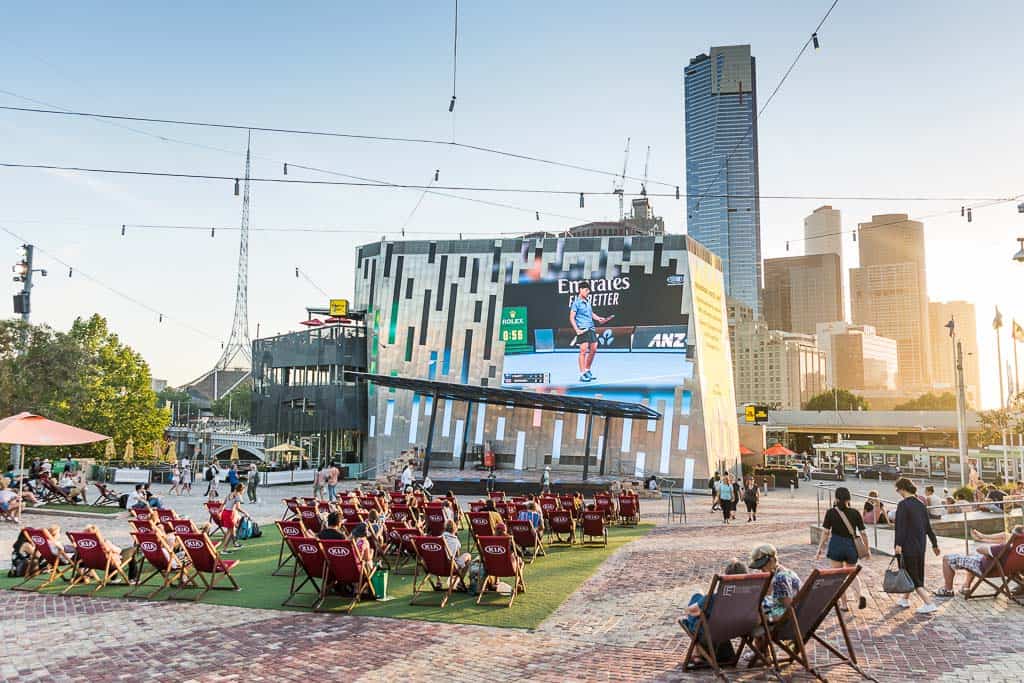
Located on the busiest intersection in Melbourne, Federation Square (more commonly called Fed Square) is the city’s only official town square.
It was opened in 2002, 101 years after Australia’s federation from Britain.
At the time of construction, Federation Square was one of Melbourne’s most controversial constructions; many critiqued its ‘army camouflage’ colours, claiming that it looked like a war-torn site.
But now, Fed Square is an integral part of the city’s identity. Inside you’ll find the Ian Potter Centre, the world’s first major gallery dedicated exclusively to Australian art.
There is also ACMI – The Australian Centre for The Moving Image – a museum that documents film & TV throughout Australia’s history.
Fed Square is one of Melbourne’s best free things to do, and a great place to take a break and people-watch.
Eureka Skydeck
7 Riverside Quay, Southbank
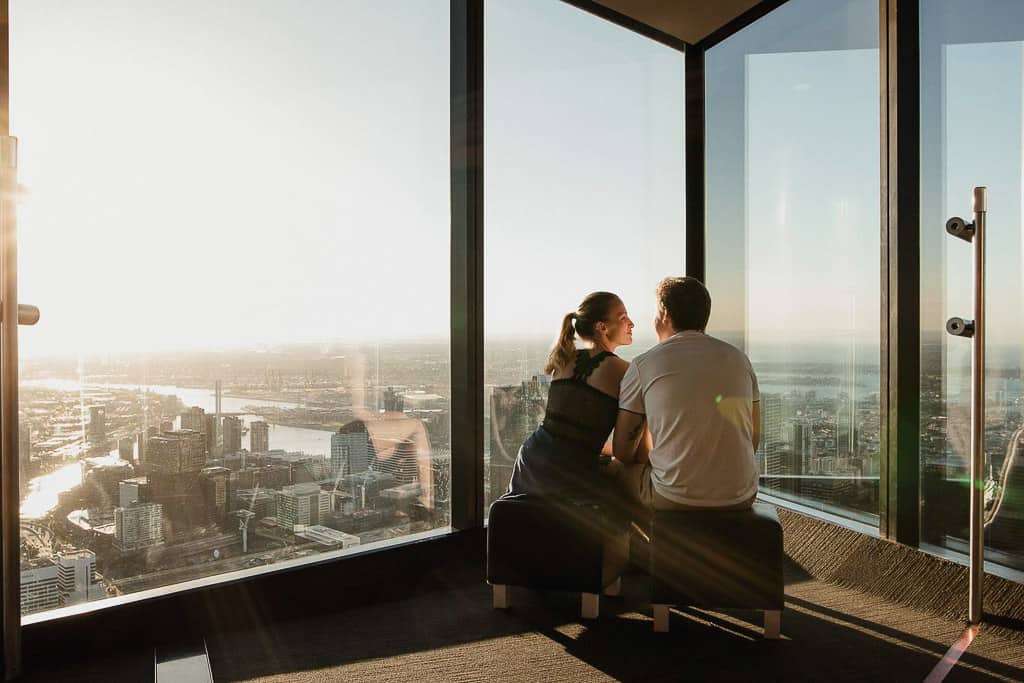
Rising 297 metres (975 ft) above Southbank, is Eureka Tower, one of the tallest residential towers in the world.
Named after the Eureka Stockade (a rebellion during the Victorian gold rush) the building’s top is coated in 24-carat gold and split by a red stripe, representing the bloodshed during the battle.
It’s here that you can access the Eureka Skydeck and enjoy an impressive panoramic view of the city.
With 30 viewfinders you’ll be able to find Melbourne landmarks or use the binoculars to zoom in for a closer look.
Or try the Edge Experience – a glass cube that projects out from the 88th floor and suspends visitors almost 300 meters high.
State Library of Victoria
328 Swanston St, Melbourne
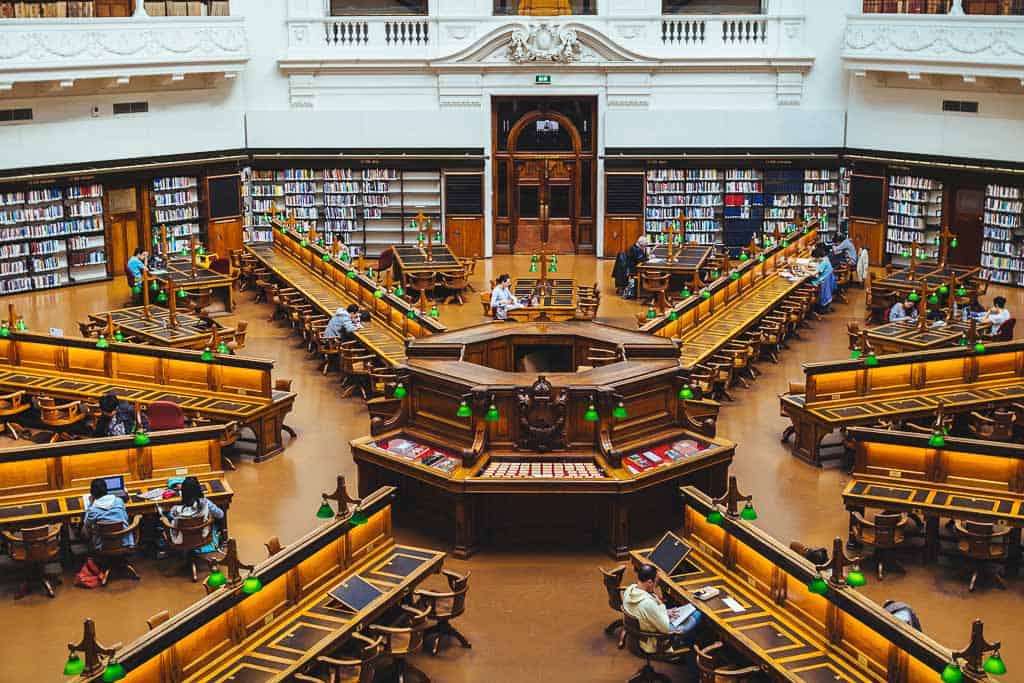
Melbourne can claim many of Australia’s oldest attractions; the oldest public art gallery, oldest building, and the oldest arcade.
We also have the oldest public library in Australia, and indeed one of the first libraries in the world.
The State Library of Victoria is opposite Melbourne Central – and is filled with historical artifacts.
It’s mammoth in size; home to over 2,000,000 books and 350,000 photographs spread across several floors.
The main attraction is the Latrobe Reading Room. Opened in 1913, this octagonal study room is six stories high and topped with a glass dome.
It can fit 320 readers at its desk, and at the time of completion was the tallest structure of its kind.
You’re welcome to wander around (keeping quiet of course) and even ascend the surrounding stairs for a beautiful view overlooking the study desks.
Section 8
27-29 Tattersalls Ln, Melbourne
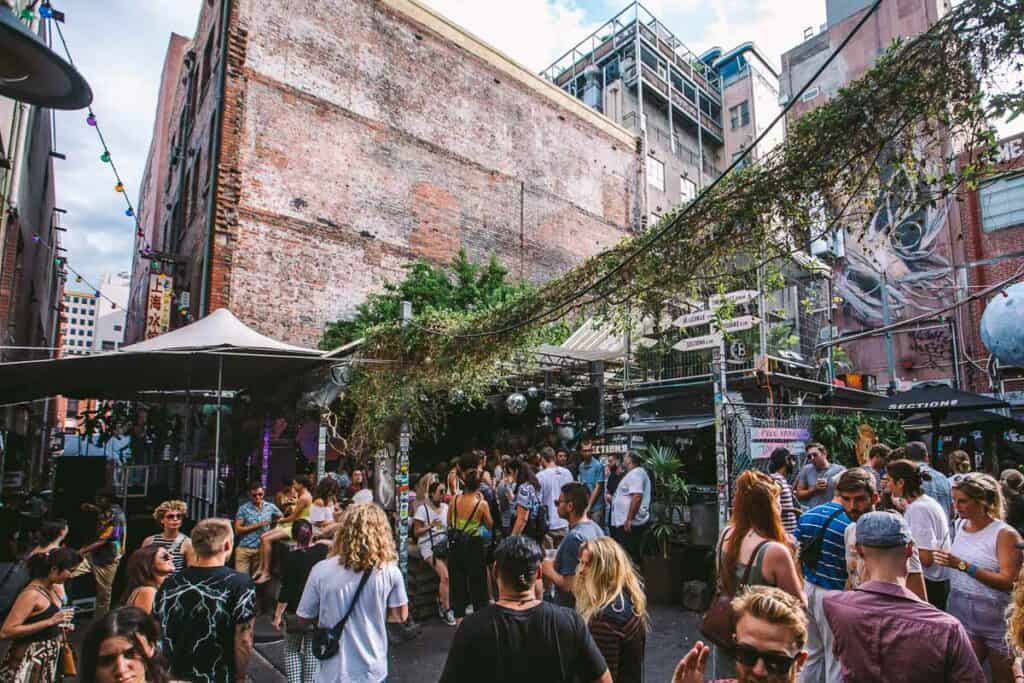
You can find just about anything down Melbourne’s alleys, including award-winning laneway bars.
The most iconic laneway bar is Section 8, built inside an old car park complete with wooden palettes for seating. Only intended to be a temporary bar, Section 8 proved so popular with the locals that it has stuck around ever since. And in true dedication to good times, it’s open 365 days a year – even Christmas Day.
National Gallery of Victoria
180 St Kilda Rd, Melbourne

Melbourne’s passion for art collection began back in 1851, during the Victorian Gold Rush. Melbourne was the largest and richest city in Australia, and many called for the government to establish a public art gallery.
The National Gallery of Victoria is the oldest and most visited gallery in Australia, home to over 70,000 works, stretching over multiple disciplines and even thousands of years – and the best part is, it’s (mostly) free.
You’re welcome to enter and explore; there is a lot to see for no entrance fee. You’ll only need to pay to see the rotating big-name exhibition. Make sure you visit the stained glass ceiling; it’s the biggest in the world.
Old Melbourne Gaol
377 Russell St, Melbourne
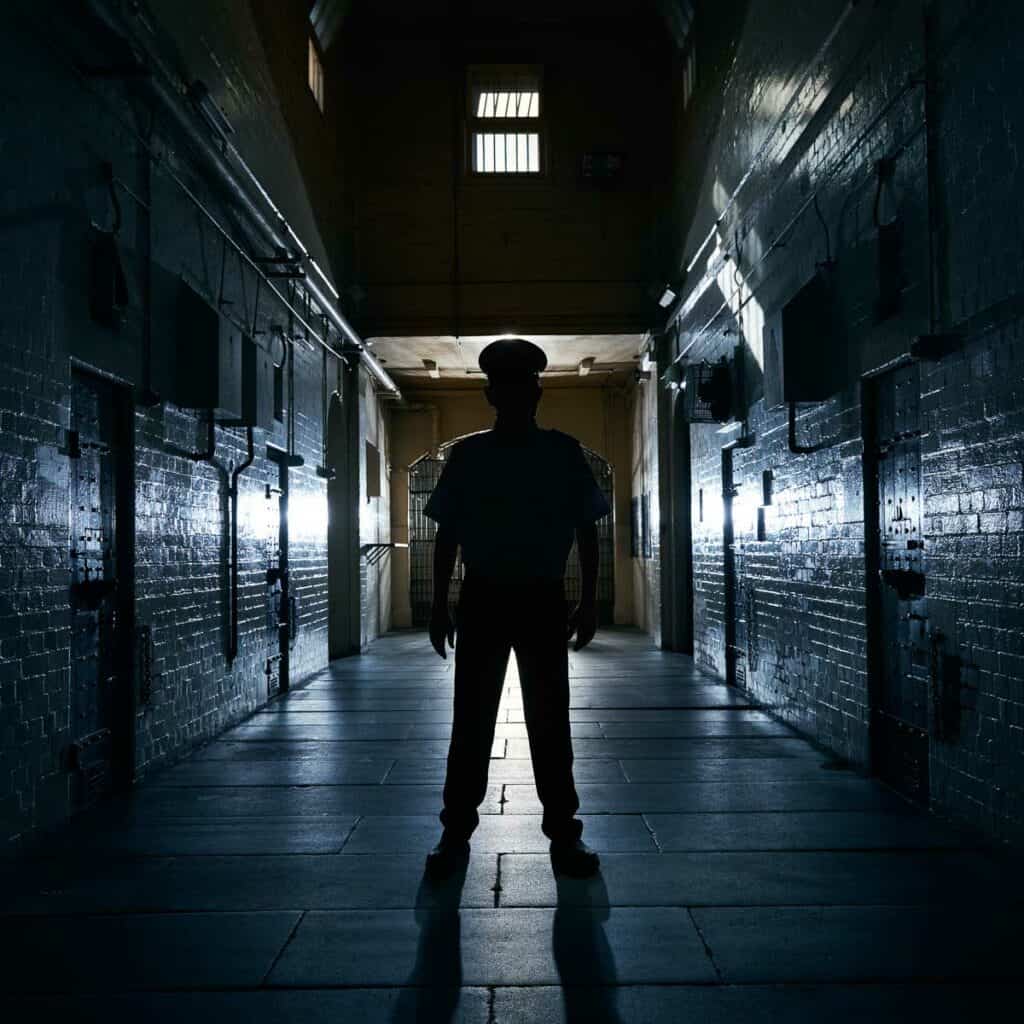
The Old Melbourne Gaol operated from 1824 to 1929, and was the scene of 133 hangings, including that of the notorious gang leader, Ned Kelly. Now it’s open as a museum and allows you to walk through the cells, see the stocks and learn about its grisly past. They operate day tours and ghost tours.
Melbourne River Cruise
Yarra River, Melbourne
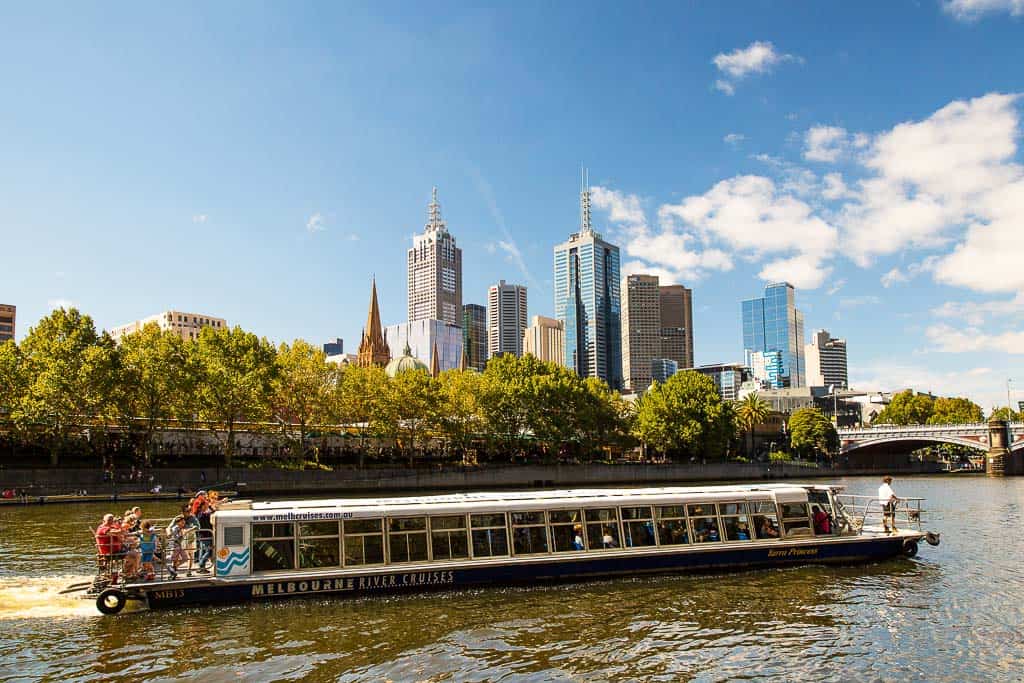
Melbourne was built around the Yarra River; when the founders arrived, the river provided fresh water for the newly established settlement.
Eventually, factories were built on the river bank and expelled their waste into the river making it unsuitable for drinking.
Our lawyers have told us to make this very clear; you can’t drink from the Yarra River, but you can cruise it.
Take a river cruise and travel through the city’s inner suburbs. You can decide to travel two ways; west (towards the port district,) or east (through the leafy suburbs.)
Heading east is recommended; you’ll pass the historic Herring Island, Como House, Birrarung Marr Park, the Royal Botanic Gardens, The Melbourne Cricket Ground (MCG) and fancy Toorak mansions.
Rooftop Bar
Swanston St, Melbourne
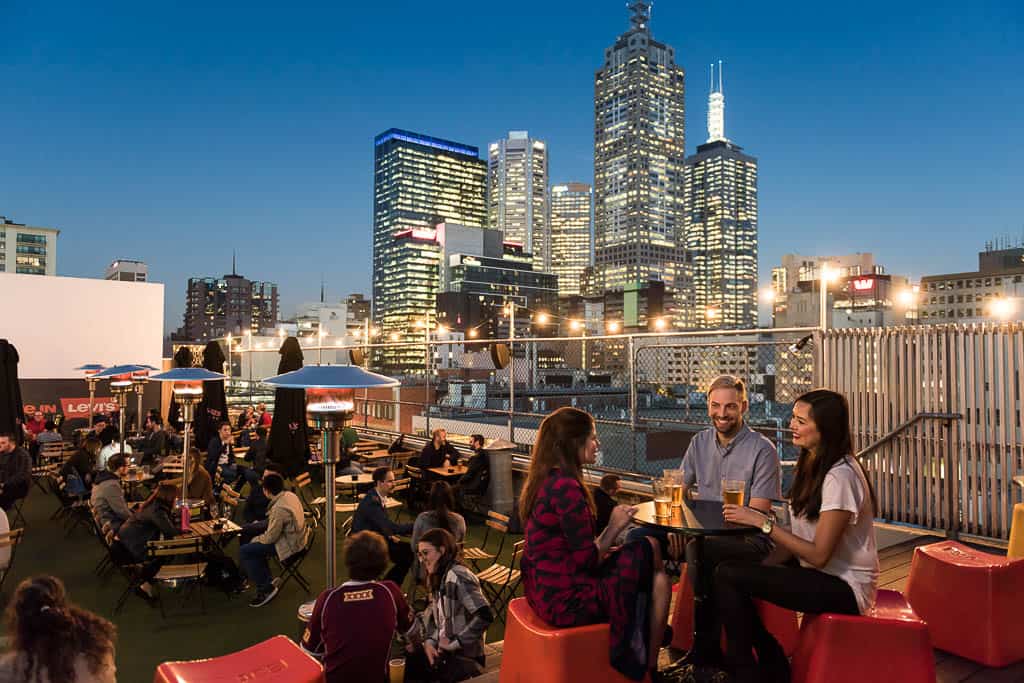
Australia’s rooftop bar scene began in Melbourne. Thrifty proprietors had empty roof space and saw the perfect opportunity. One of these original rooftop bars is very simply called Rooftop Bar.
Perched seven floors up, this spacious bar is covered in astroturf and has a beautiful view of the city. However come prepared to climb the stairs: the tiny lift, as charming as it is, is often out of action. Rooftop Bar is open all year round, however, it truly shines during the warmer months.
Queen Victoria Market
Queen St, Melbourne

At over 140 years old, Queen Victoria Market is a staple of local Melbourne culture. Occupying two city blocks, the Vic Market (as the locals call it) houses hundreds of stores.
These include the meat & fish hall, delicatessen, fruit & vegetables, and specialty shopping. It’s a bustling environment, and worth just wandering around.
We recommend grabbing a bite from the deli (go for the gözleme) and a coffee from Market Lane Coffee. The Vic Market also hosts market food tours, allowing you to sample the wares from several different stores.
Melbourne Museum
11 Nicholson St, Carlton
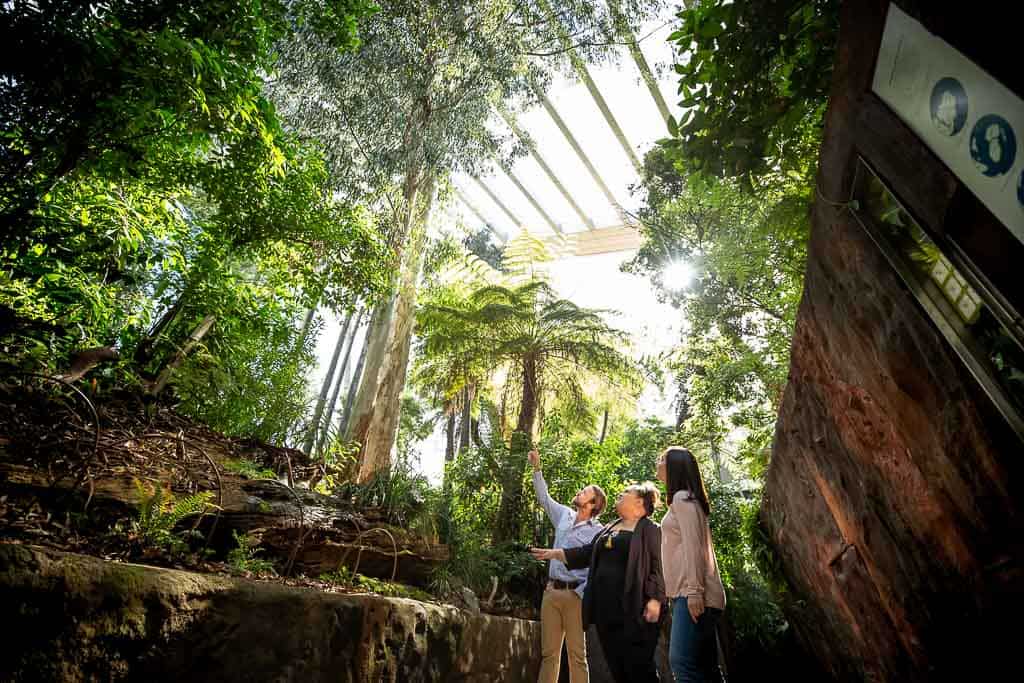
Located in the lush Carlton Gardens, The Melbourne Museum showcases Australian history and interactive learning. There are free exhibitions, so you don’t have to spend a cent, but they also have rotating paid exhibitions.
There is a dinosaur section, which features a skeleton of a Diprotodon – a giant wombat-like creature along with a bunch of other installations, including a kids section.
Visit the preserved hide of Pharlap, Australia’s iconic racing horse. This horse ran during Australia’s depression period in the 1930s and won 37 of the 51 races he entered.
IMAX Cinema is directly next door. This single-screen movie theatre has one of the biggest screens in the world. Make sure to wander the Carlton Gardens, one of the best gardens in Melbourne.
Hot Air Balloon

There’s nothing like a hot air balloon to get a view of the city.
Every morning, these hot air balloons fire up in a Melbourne suburb and then float for an hour above the city; Melbourne is one of the few cities in the world where that’s possible.
Not only does it make for an exciting adventure, but it’s also a great way to understand the layout of Melbourne.
Pickup is from the city, and after the flight, you’ll float down into one of Melbourne’s many parks.
Parliament House
Spring St, East Melbourne
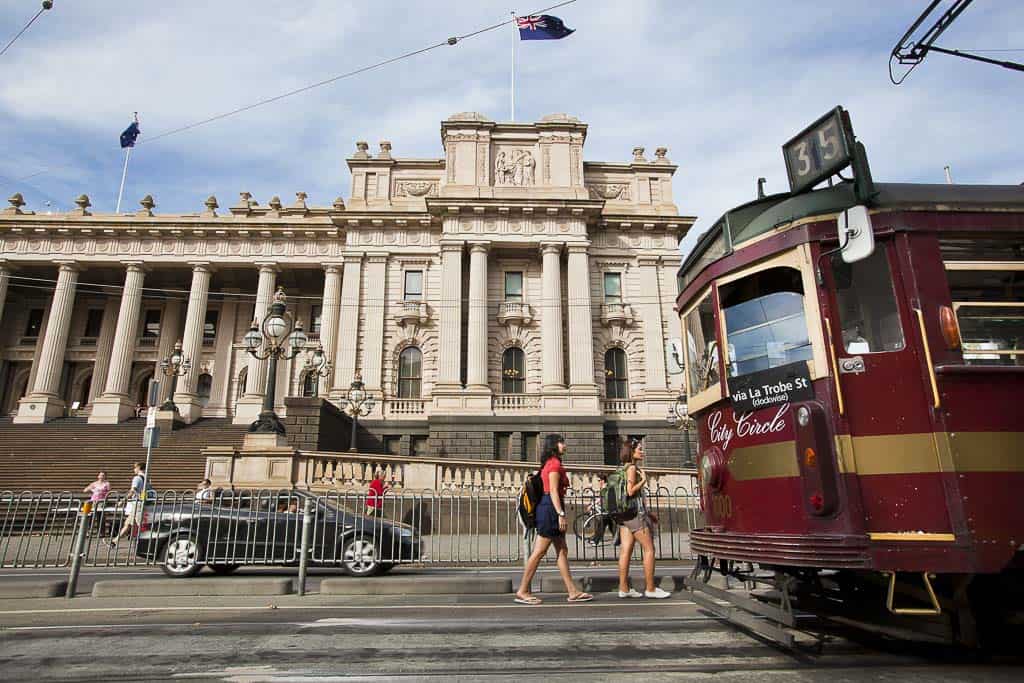
From 1901 to 1927, Parliament House was the home of the Federal Government before it moved to its permanent home of Canberra.
At the top end of Bourke Street, is where the Victorian Parliament sits to make legislation. Politics doesn’t seem like a big draw-card, but the building has a very fascinating history.
Parliament House offers a free tour that will take you through the chambers, library, and all sorts of fascinating rooms. You’ll spend an hour or so wandering throughout the building with a very knowledgeable tour guide.
Because Parliament House was built just after Victoria’s gold rush, several of the ceilings are covered in actual gold.
The Yarra Valley
Regional Victoria
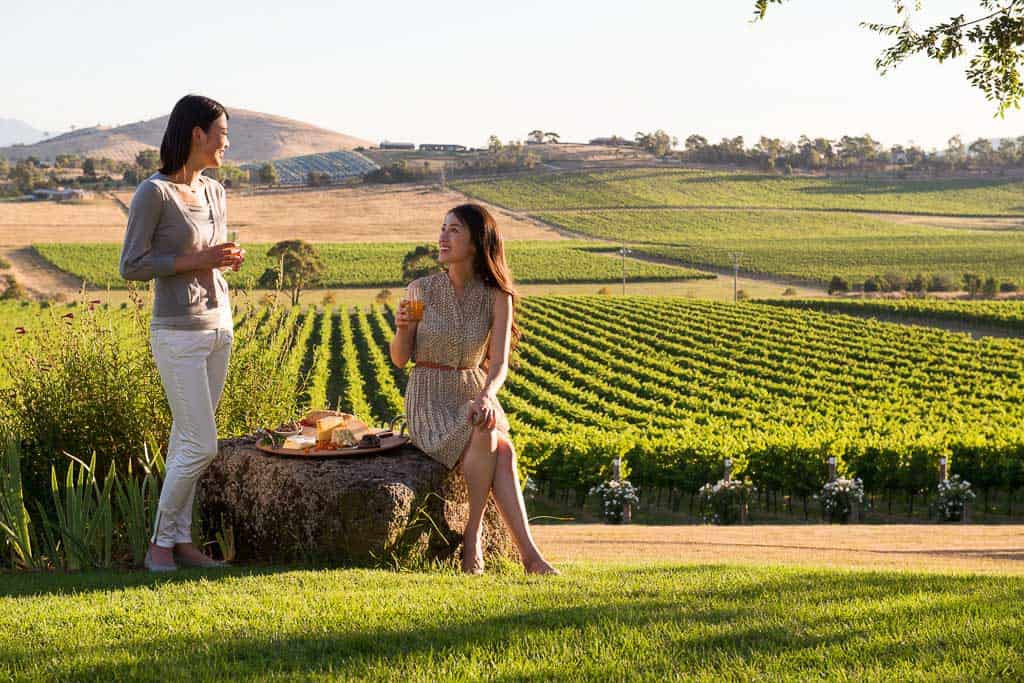
Do you like wine? We thought so. You’ll be spoilt for choice at the Yarra Valley. This regional area is home to hundreds of wineries, notably producing Chardonnay, sparkling wine, and Pinot noir.
It’s a very popular tourist destination, welcoming over three million visitors every year. You can visit wineries, try samples, and then purchase your favourites.
There are also non-wine makers, producing gin, vodka and other spirits. Four Pillars & Alchemy are both worth noting.
Avoid driving – we don’t want you going to jail – and take a tour of the Yarra Valley instead.
Cooks Cottage
Fitzroy Gardens, East Melbourne

Cook’s Cottage is technically the oldest building in Australia. Built in 1755 in the English village of Great Ayton, North Yorkshire, it was constructed by James and Grace Cook.
Their son, also James, is responsible for the first recorded European contact with the east coast of Australia; you might know him better as Captain Cook.
In 1934 Cook’s Cottage was deconstructed and transported to Melbourne, where it was rebuilt in Fitzroy Gardens.
Purchase a ticket and you’re able to explore the cottage with an audio guide. While you’re here, it’s also worth exploring the Fitzroy Gardens, they’re 64 acres of lush greenery right next to the city.
Melbourne Cricket Ground
Brunton Ave, Richmond
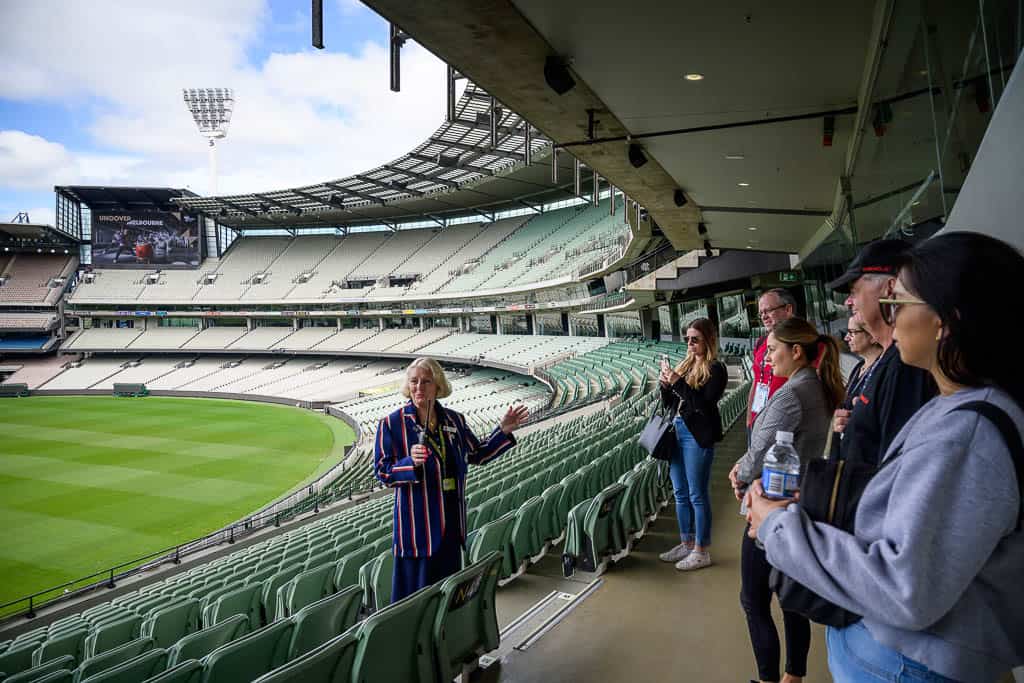
Melbourne loves sports – and the Melbourne Cricket Ground is the sports capital of the nation. Commonly referred to as ‘The G’ it is the largest stadium in the southern hemisphere and the 10th largest in the world.
Founded in 1853 by the Melbourne Cricket Club, the MCG has since hosted the 1956 Summer Olympics, two cricket world cups, and The Commonwealth Games. The MCG regularly hosts AFL matches (Australian Football League) and hosts the AFL Grand Final every September.
St Kilda
St Kilda

When it comes to Australian beaches, Melbourne isn’t the first place that comes to mind, but we do have St Kilda; a beachside precinct about 6km from the city centre. Here you’ll find a dining district, beachside bars, a theme park, and adorable fairy penguins.
Not far from Acland St is Luna Park, a historic amusement park built in 1912. Based on the park in Coney Island in New York, Luna Park is filled with amusement rides, including a roller coaster that skirts the park’s circumference.
Head to the beach, and onto the pier, and you’ll come to the fairy penguin viewing platform. At sunset, these adorable critters waddle up to their nests in the rocks, returning from a day of fishing.
Shrine of Remembrance
Birdwood Ave, Melbourne
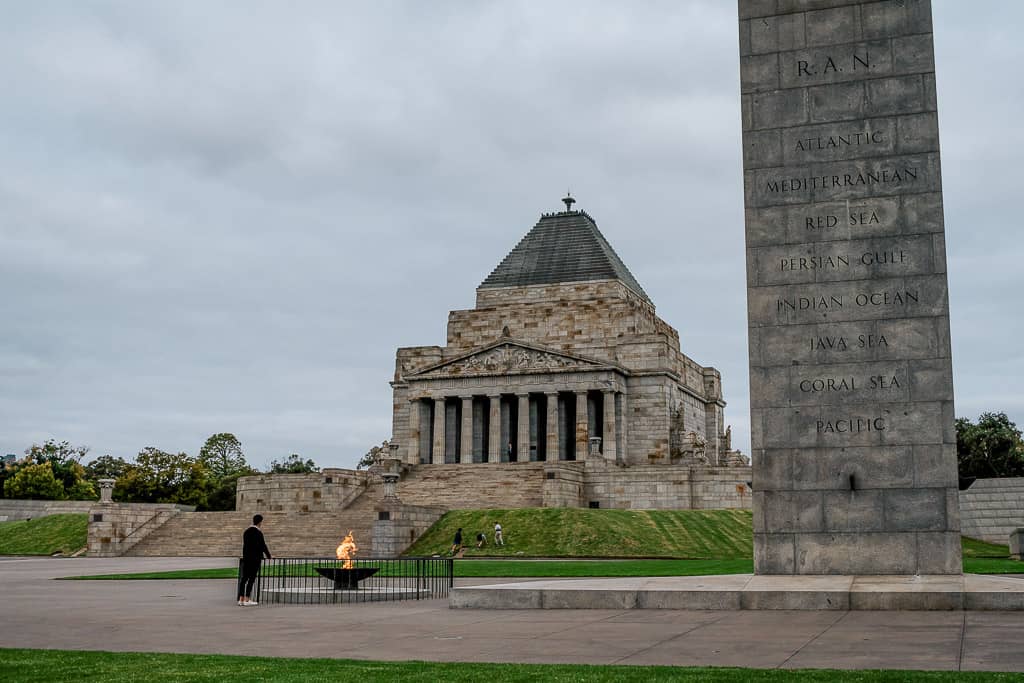
The Shrine of Remembrance (commonly referred to as The Shrine) is a war memorial built in honour of the men that fought in World War I. It now functions as a memorial for all Australians who have been sent to war.
The Shrine was built during the great depression and construction relied heavily on public contributions. £160,000 out of a total of £250,000 was donated by the public. This equates to around £ 9.4 million by today’s standards.
As a visitor, you’re able to visit the exhibitions that document Australia’s presence in world conflict, all housed in a cathedral-like underground chamber beneath The Shrine. It is a beautiful testament to the men who gave their lives for our country. It’s humbling, and highly recommended.
Royal Arcade
335 Bourke St, Melbourne

Built in 1870, the Royal Arcade is not only Melbourne’s most popular arcade but also the oldest in Australia. The Royal Arcade is a marvel to walk through, with checkered tiles and glass ceiling, making it a great photo opportunity.
Like most of the city’s arcades, Royal Arcade is filled with small independent producers – many of which are confectionaries.
At the Little Collins St end, there are two giant carvings of the mythical figures, Gog & Magog: biblical figures that were said to be allies of Satan. They stand flanking a large clock that was designed by Thomas Gaunt, once ‘the only watchmaker of the Australian colony.’
Visit on the hour and you’ll see them both ring the bell.
The Yarra Trail

While walking is the best way to explore the city, a bike will help get you out to the suburbs.
The Yarra Trail winds along the (Yarra) river for 35km (22 miles), passing Dights Falls, wattles and eucalypts, and Studley Park Boathouse.
You can ride it either way, but you’ll probably start at Southbank (opposite Flinder’s Street Station) and head away from the city.
For an easier ride, you can stop at the Eltham Railway Station and catch the train directly back into the city.
Phillip Island
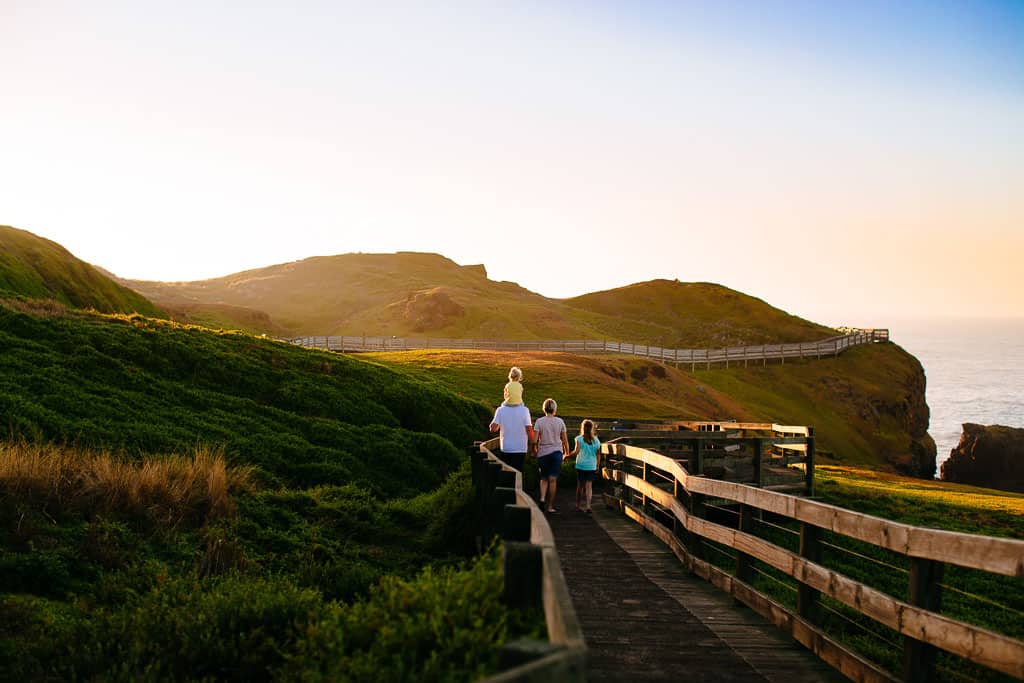
Phillip Island is known for many things, but just like St Kilda, it’s the fairy penguins that capture visitor’s hearts.
These adorable creatures can only be spotted on the southern coast of mainland Australia, and spend 80% of their time out at the sea. Come sunset they waddle up the beach to take roost, in what is dubbed ‘the penguin parade.’
Phillip Island is its own attraction, and deserving of at least a dedicated day. When’s the most popular time to visit? During the Summer, the population of Phillip Island swells by 400%.
Peninsula Hot Springs
140 Springs Lane, Fingal

All of this sightseeing, eat and drinking can be tiring, so break it up with a visit to the Peninsula Hot Springs.
Founded by brothers Charles and Richard Davidson in 1997, the inspiration for the baths began when Charles visited several hot springs while living in Japan in 1992.
Throw on your bathers, kick off the shoes and sink into one of many geo-thermal pools. Inspired by the baths in Japan, the water is infused with natural minerals which they claim detoxifies the body and rejuvenates the spirit.
Royal Botanic Gardens
Birdwood Avenue, Melbourne
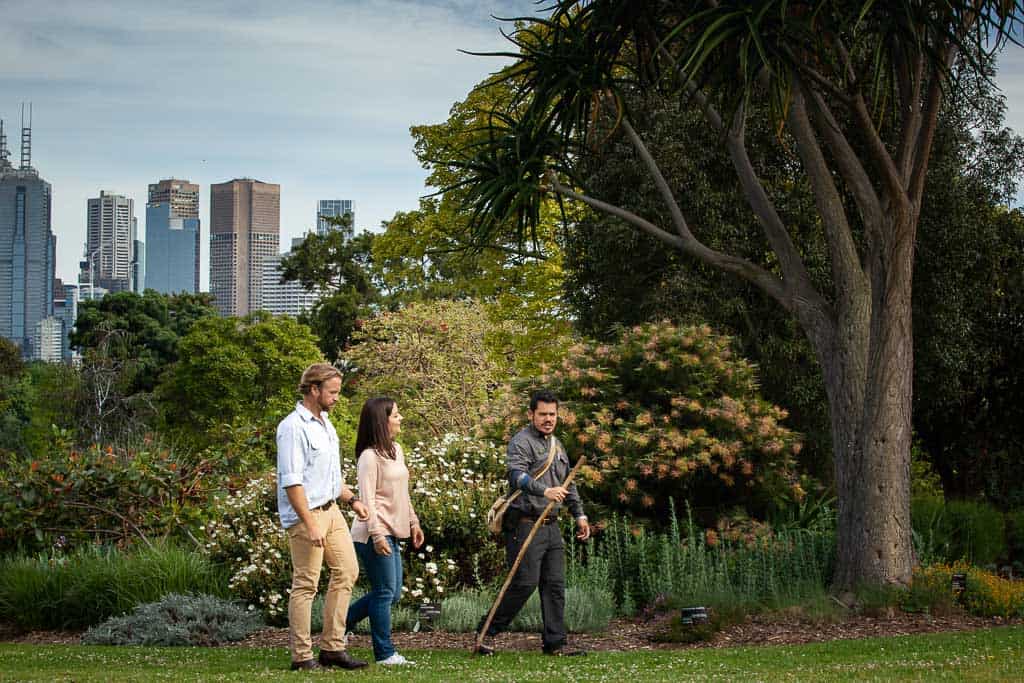
In 1844, Charles La Trobe, the colony’s first Lieutenant Governor, received a request from the Melbourne council asking for parks close to the town, ‘where they could conveniently take recreation therein after their daily labor.’
The 500 acres that La Trobe reserved included Royal Park, The Domain, Fitzroy Gardens, Fawkner Park and the Royal Botanic Gardens.
The Royal Botanic Gardens is now one of Melbourne’s finest attractions; stretching over 89 acres, it is filled with 50,000 individual plants representing 8,500 different species.
There is no entry fee, and you’re welcome to wander around and explore the gardens.
Melbourne Zoo
Elliott Ave, Parkville
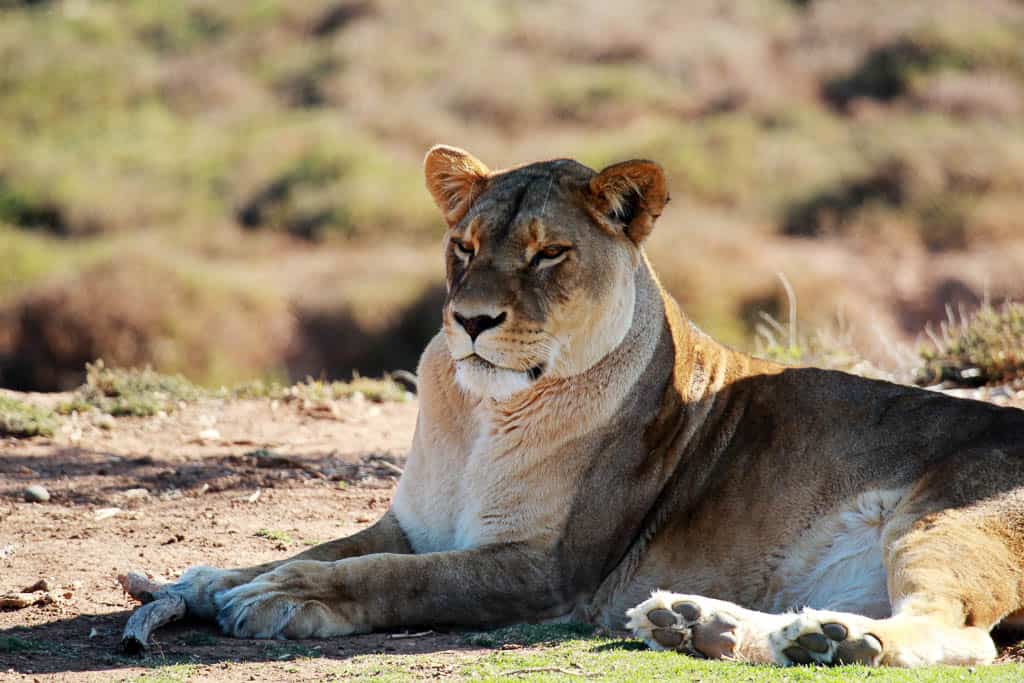
Modeled after the London Zoo, The Melbourne Zoo is the oldest Zoo in Australia, and home to over 5000 animals from 320 species; if you want to see a kangaroo or koala, this is the closest location from the city.
Along with their Australian outback section, there is also an elephant enclosure, butterfly kingdom, orangutan sanctuary, and reptile house.
Fitzroy
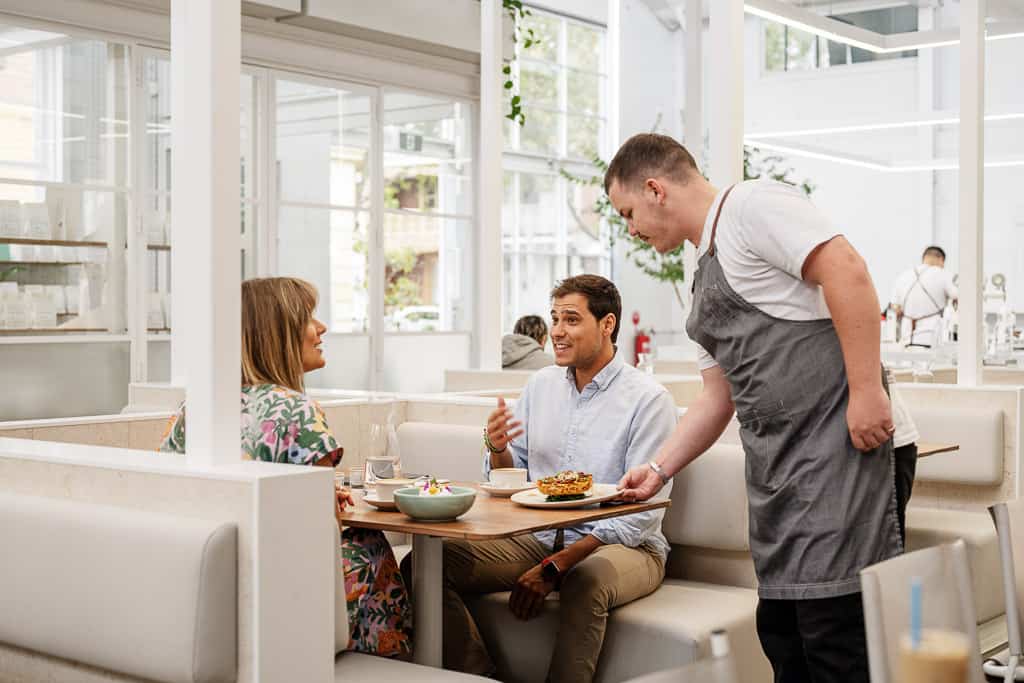
Each suburb in Melbourne has its own distinct flair. One of the liveliest and historical is Fitzroy. Located approximately 3km from the city, Fitzroy is Melbourne’s oldest suburb.
It’s known for its street art, music scene, and general bohemian culture. The main street is Brunswick Street (not to be confused with the suburb of the same name) and it’s filled with restaurants, bars, cafes, and clothing stores.
Fitzroy is the vegan capital of Melbourne, with restaurants like Veggie Bar and Transformer.
Dandenong Ranges
Great Dividing Range
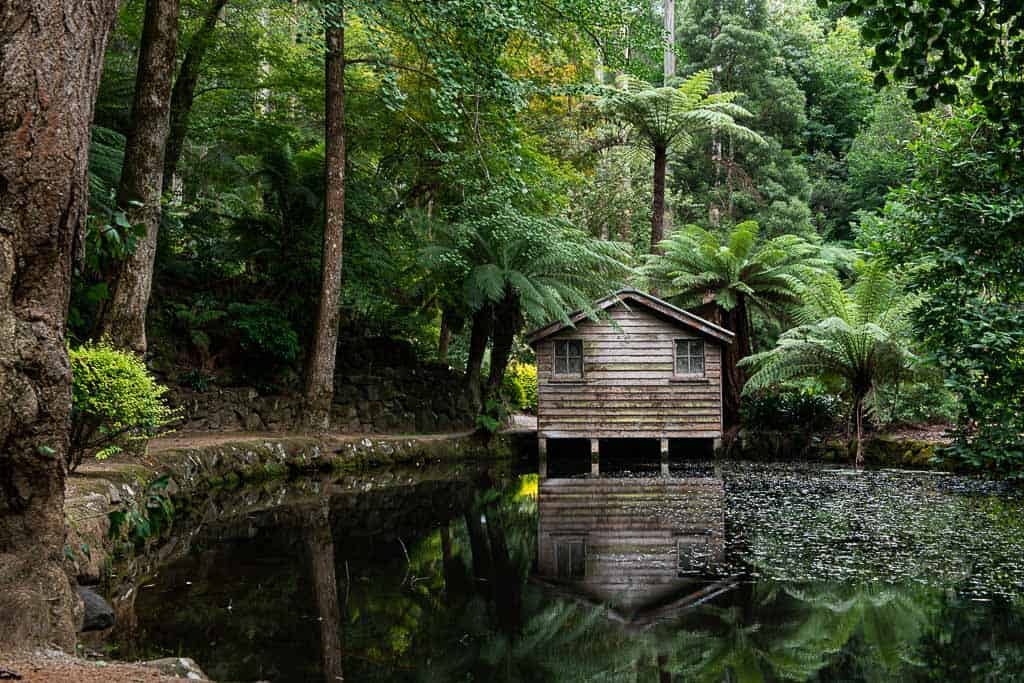
The Dandenong Ranges (or just ‘the Dandenongs) are a range of mountains located 35km (22miles) east of the Melbourne city centre. Since the 1870’s they’ve been a popular destination for daytrippers looking to escape the concrete jungle.
373 million years ago it was an active volcano, now it’s home to scenic walks, lookouts, picnic areas and Puffing Billy – a heritage-listed steam railway.
The public transport options available to travel to the ranges can get complicated; you’ll need to change between trains and buses. The easiest way is to hire a car and travel there yourself.
St Paul’s Cathedral
Flinders St, Melbourne

Where St Paul’s Cathedral sits is the site of Melbourne’s first Christian service, held in 1835. The block was then used as a corn market until St Paul’s Cathedral was constructed in 1891. Since then it’s been a significant piece of Melbourne’s identity.
St Paul’s is open to everyone and its central location makes it easy to visit and admire the architecture. Entry is free, but there is a small cost to be able to take photos.
Taylor was born and raised in Tasmania. He moved to Melbourne to study Film & television, and went on to start a marketing agency for hospitality.
He has a love for rock ‘n’ roll bars & New York-style pizza. In 2020 he was amongst the top 1% of Frank Sinatra listeners on Spotify.



